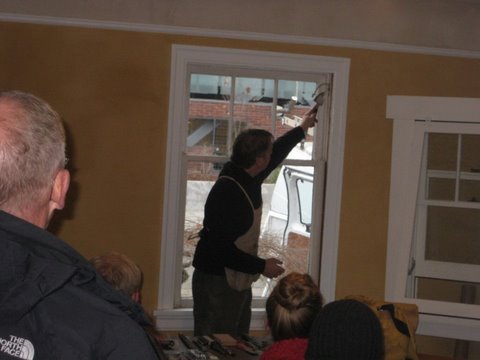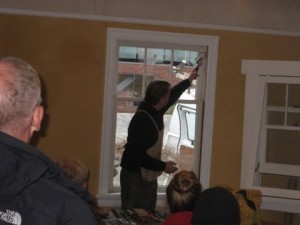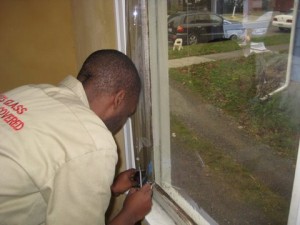
Submitted by Thurston County Solid Waste

If you own an older home, you might feel your original wood windows are where you are losing heat. Wood or original windows are an essential part of a historic home. Historic Preservationists identify original materials such as windows as “character defining features.” Replacing them with vinyl or aluminum may seem like a quick fix, but first consider the wasted materials and lost history.
If you’re concerned about energy efficiency, the Washington State University Energy Program recommends you seal air leaks and install insulation before replacing windows. Window inserts and low-E film are other low-cost, easy to install options. Check with your local heritage commission for programs that help property owners deduct repair costs from property taxes. If your windows contain lead paint, your local heritage commission or a professional carpenter can guide you through safely sealing them. For Thurston County, you can click here.
Construction and demolition debris makes up 23% of the waste our county generates. Preserving windows helps reduce the amount of trash going to the landfill. Eventually, vinyl and aluminum windows must be replaced. Aluminum frames can be recycled, but vinyl frames are not currently recyclable in Thurston County. The greenest window is the one that already exists and can be modified and fixed over time.

When you replace windows, you also waste the resources and energy already spent to make them. According to the Heritage Canada Foundation, manufacturing vinyl or aluminum windows is far more energy intensive than wood, and it takes 40 to 100 years to recoup in energy savings what was spent to replace the windows. Each window took energy to create. The minerals were mined, transported, and manufactured to create the glass pane. Likely, the wood came from an old growth forest. Again there was energy consumed to harvest the tree, transport it, mill it, and make the window.
If you do decide to replace your windows, see if you can get them used before buying new. Habitat for Humanity’s ReStore, 2Good2Toss.com, and craigslist are all good places to start. If you prefer to buy new, look for windows that contain recycled content. EcoWoodworks in Tumwater can make custom wood windows even with salvaged wood.
Check WhereDoITakeMy.org to find locations to donate your old windows or recycle the glass.




















































